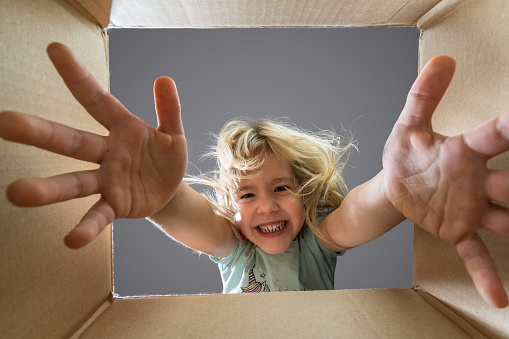Each person builds his life according to his personal understanding of what happiness is. In modern society, there are few people who are truly satisfied with life and are able to enjoy every day they live. Many have difficulty identifying their desires, have difficulty interacting with society and openly expressing their emotions, even if they’ve bought tickets to a long-awaited trip or won a jackpot at CasinoChan, and have fears and insecurities about their own abilities.
Most of these negative attitudes that affect adult behavior originate in childhood. The child that lives in us and as an adult is the way we ask for help and try to help ourselves to overcome the difficulties formed in our minds.
The Inner Child – Who Is He?
From a scientific point of view, the inner child is a special element of the human psyche. He is responsible for the creative beginning, the need for self-expression, the ability to feel joy. The inner child, first of all, provides the emotional sphere and is the source of desires. Suppression of this element leads to a lack of inner freedom and makes a person incapable of achieving his or her own aspirations.
The inner child in adulthood is a direct projection of childhood experiences, including physical sensations, strong emotions, needs, etc. This experience stays with the person forever and influences the rest of his or her life.
Unfortunately, many modern people have a repressed, traumatized inner child who is “driven” deep inside. As a result, the person is in constant fear of the world around him, has a high level of anxiety, restricts himself by endless prohibitions.
People with an unhealthy and depressed inner child lose the ability to trust, constantly feel resentment and dissatisfaction with life.
What Are the Causes?
The reasons for this state of the inner child lies in the fact that often in childhood a person experiences very strong negative emotions: disappointment, pain, feelings of misunderstanding. Children are manipulated, hurt, and depreciated. It is not even worth mentioning physical violence, which, as studies show, almost every fourth child encounters. The inability to defend themselves in front of stronger adults destroys the future inner child.
Also Read: The Benefits of Adding a Breast Lift to Your Augmentation Procedure
How to Change the Situation
Even though it is impossible to relive childhood, it is possible to satisfy the inner child and to heal his or her trauma as an adult. We need to start by accepting and understanding this part of the psyche, moving consistently toward releasing it.
1. Talk to Your Inner Child
Acknowledge your inner child and let it know that you treat it with kindness and respect.
You might say to your inner child, for example:
- I love you.
- I hear you.
- I’m sorry.
- I forgive you.
Make it a habit to talk to your inner child. You can also communicate through journaling by asking your inner child a question and then writing down the answer.
2. Look at Pictures of Yourself as a Child
Journey back to your childhood with old photos and memories of important moments. Have these pictures imprinted in your memory because they will serve you well throughout your work with your inner child? You may even want to put one of your photos of yourself as a child next to your bedside table or in your purse to remind yourself of the presence of your inner child.
3. Recreate What You Loved to Do as a Child
Sit down and think about what you loved to do as a child. Maybe you enjoyed climbing trees, playing with toy blocks, cuddling a stuffed toy bear, or eating warm porridge. Take time to incorporate the activities you loved to do as a child.
Through working with the inner child, people find aspects of themselves that they, as adults, didn’t even know existed. These discoveries are life-changing. Keep your heart open.
4. Take Time to Create
That’s where your child shows up. Drawing, dancing, makeup, or trips to festivals. These are all things that the Child craves. Turn off your head and just be yourself! Don’t be afraid to spend a bit on these activities. Since you are eager to try them, it means you could lack them while being a child.
5. Interact With Children and Adults in the Child State
Play with your siblings or your kids, but turn off your Parent fears – as long as you’re building a Lego castle or launching ships, there won’t be a world disaster, it’s not always vital to control everything.
6. Love
Flirting is the Child’s skill, his game. Let yourself play it, joke around, forget the muttering Parent that “you’re an adult.” This way you will make the world around you better.
7. Dream
Start a diary, where you will paste pictures of dreams, burn desire on New Year and aim to write a book. The dream is the engine of your personality, which only works in the “mode” of the Child.
8. Make Time for Yourself
Family, kids, work, mortgage… Even that’s no reason to deny yourself urges. A chocolate bar that you won’t share with anyone, a spa in the bathtub, and a trip to the countryside is what you need to support your child.
9. Never Hide Your Emotions
Remember, by locking everything inside you, you put your inner child in a cage. Tears, sadness, pain – it’s normal. Without them, there is no happiness and joy. Without them, there is no understanding of what you really need.
And remember – alcohol and other psychotropic substances have become for many the only way to give freedom to the Child. It’s a destructive way, causing addictions and losing the skill to let the Child out when you really need it.
The Child will tell you what you want, when, and how. All you have to do is listen – write it down, sketch it out, tell it. Then you will achieve harmony inside with yourself and with those around you.
Also Read: Top No-Contract Internet Plans for Small Businesses




